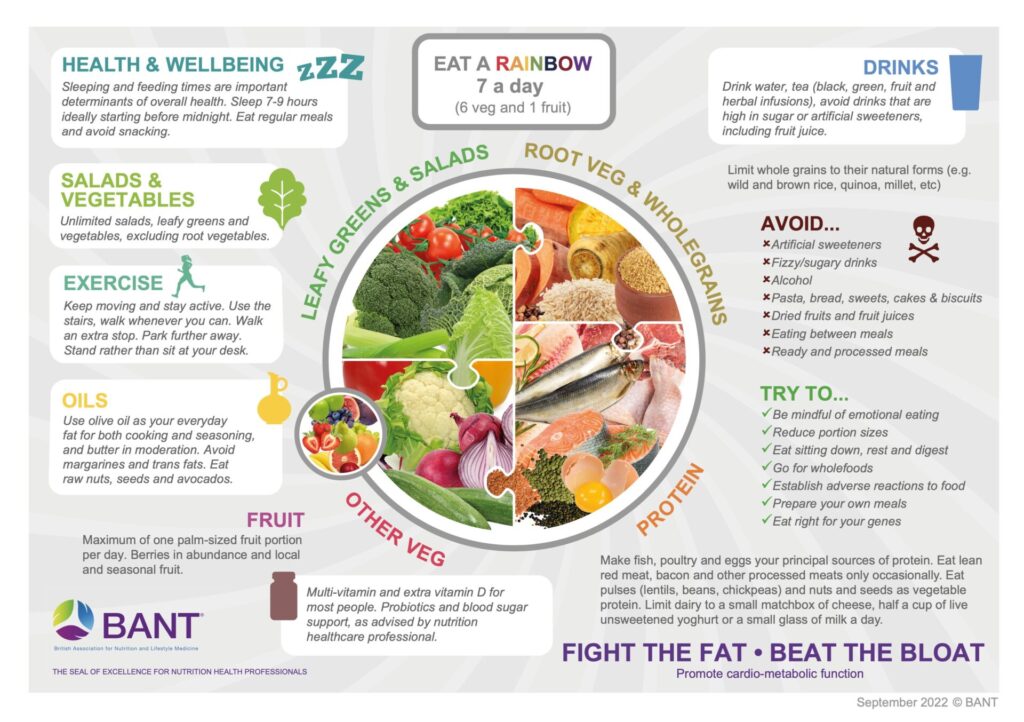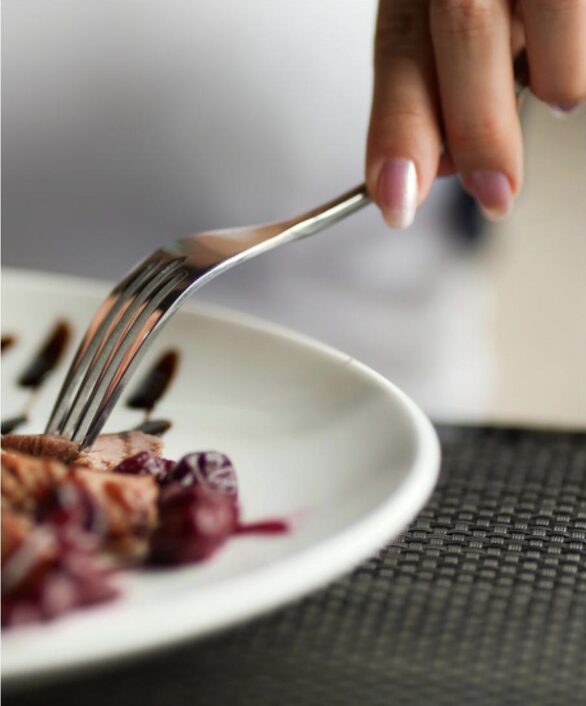Some topics come up again and again – nutritionist Karen Geary tackles the perennial summer weight loss question
After a soggy spring, the early summer sun is out as I write. Every year this means my inbox starts filling up with queries from people looking for help with weight loss. It’s really easy to get confused by current ‘healthy eating guidelines’.
Do we count calories? Too triggering for many. Should we follow the NHS Eatwell Guide plate? Please don’t! It is just SO out of date, and doesn’t use the latest research.
Let me show you how.
My professional governing body, the British Association for Nutrition and Lifestyle Medicine (BANT), works on the basis that no one single diet is right for everyone. However, they have two infographics which provide a great basis for when it is not possible to get detailed, personalised advice. The infographic shown below is for weight loss. On their website is their general wellbeing plate.
What is great about the weightloss plate is that half of it is made up with vegetables – half leafy veg and the other half ‘other’ veg, such as cauliflower, onions and squashes. These are all high in fibre, which is the cornerstone of our diet, supporting both metabolic health and gut function.

Aim for five to seven cups of veg a day.
Fruit isn’t included in the plate – you will see it separately on the infographic – no more than one piece a day when losing weight, and ideally low sugar fruits such as berries and apples.
Protein features strongly – more than a third of the plate. We should be eating protein with every meal. It helps to keep us fuller for longer, which is especially helpful when trying to lose weight!
There is a lower proportion of carbs and grains – this taking up less than a quarter of the plate, and combined with root vegetables. It focuses on grains in their natural forms, like millet and quinoa.
Olive oil is recommended as the best to use as an everyday fat in moderation. Up to two tablespoons of olive oil is good for both heart and gut health. Butter is also an option. I’d also add ghee or avocado oil if you’re looking to cook with it at high temperatures.
And yes, I know this all sounds fine in theory, but how does it all look in practice?
Breakfast:
180g Greek yogurt (high protein), with 90g berries (frozen is fine). Add your choice of seeds, and maybe some flax.
Two poached eggs with half an avocado, maybe some kimchi or tomatoes. Or poach the eggs in a shakshuka (spicy tomato sauce).
Small piece of genuine sourdough or rye bread. Note the BANT plate is not big on food made with flour while losing weight, but a small portion a day often makes it much easier to be consistent with your food choices.
Lunch:
Tinned mackerel or salmon with a rice or chickpea salad (mostly salad). Try a simple dressing made with olive oil and cider vinegar.
Or a veg omelette or frittata made with two eggs (add some liquid egg whites if you want more protein).
Dinner:
An easy traybake – Chicken portions roasted on mixed veggies all cooked in the oven with some olive oil.
Or perhaps some salmon baked in parchment, served with broccoli and sweet potato fries.
Karen welcomes questions and queries via Amplify Nutrition for personal advice




